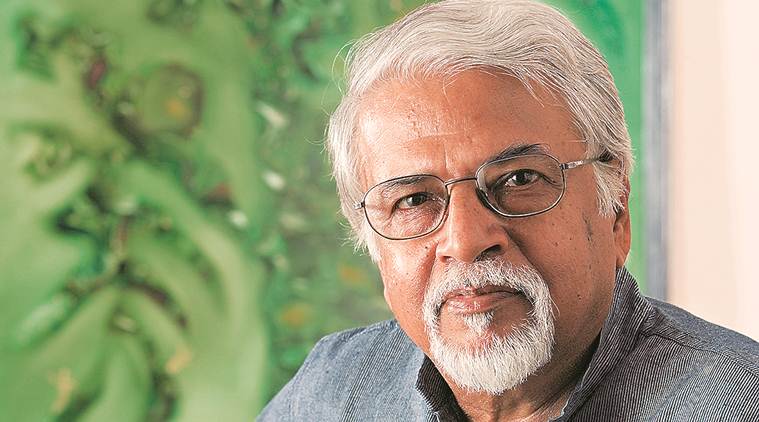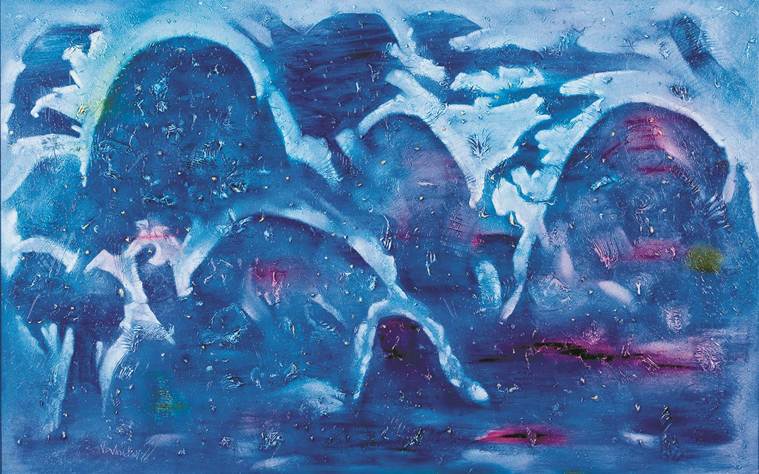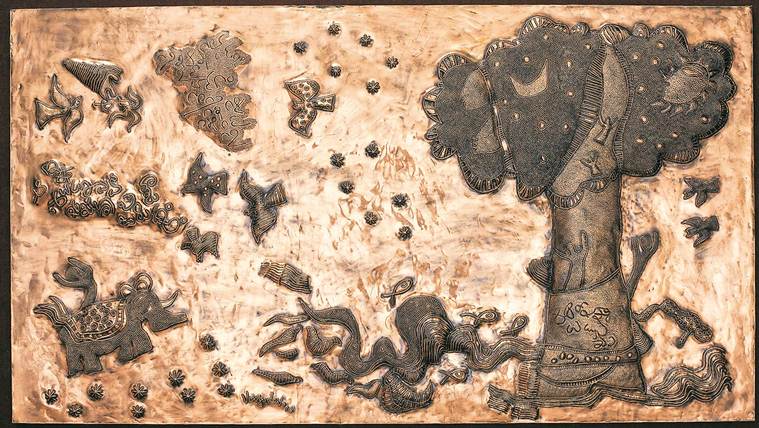
Becoming an artist was never the plan. “My parents wanted me to pursue engineering or medicine, even though my mother was an amateur artist,” says SG Vasudev. Drawing diagrams in his botany and zoology class was how he was introduced to art. He would draw caricatures and cartoons for leading Kannada newspapers in Mysore, where he grew up. “I wanted to join art school but my father never allowed me,” he says, “However, that changed when art historian G Venkatachalam saw my work and insisted I pursue art as a career. In 1962, I joined the Madras Art School, which was run by KCS Paniker.”
It was the time when artists were influenced greatly by Europeans. Vasudev admits it was difficult to completely block off Western art but he chose to move away from those idioms and create his own identity. “I was inspired by FN Souza and visited Jehangir Art Gallery in Bombay in 1963-64 to see his works. When we met, he told me my art was different from his,” says Vasudev, 78.
Vasudev’s works of 60 years are part of an exhibition in Mumbai called “Inner Resonance — A Return To Sama”. Chennai-based art critic and editor Sadanand Menon has curated the exhibition that first showcased in Bengaluru, and will travel to other cities shortly. The display at the National Gallery of Modern Art, Mumbai, presents 300 works that include 28 copper reliefs and 37 tapestries.

Bengaluru-based Vasudev’s works are inspired largely by poetry, literature and theatre. “I was very lucky to have studied in an environment where I had the freedom to express myself and that allowed me to use craft in my art. I was fortunate to have worked with some amazing people,” he says.
With the formation of the Cholamandal Artists’ Village in 1966, with Paniker at the helm, there was a surge in creating a new artistic idiom by people who believed in tradition, without the romance of the past. It would nurture numerous artists of the time and grow to become the hub of the Madras Art Movement, that brought modernism to south Indian art. “Indian artists used to be influenced by the West but all that changed after 1966-67. Artists like Ganesh Pai helped, and I feel their contribution to Indian art does not get the recognition it deserves.”
When asked about his fondest memories, he says, “I think it would be when I met Girish Karnad in 1963. Working with him was such a privilege. His works really opened up my understanding of literature. Besides appreciating poetry and Kannada theatre, a significant part of my life was also influenced by my mother and grandmother, who were amazing storytellers.”

In the ’70s, Vasudev began working on the theme, Vriksha or the Tree of Life, which became a recurring motif in his work. A metaphor for the primal forces in creation, Vriksha morphed into men and women in the act of love, unselfconscious and consumed by the moment. Well-known artist RM Palaniappan, speaking about Vasudev’s contribution to Indian art, says, “What I love about Vasudev’s works is how he creates the abstract in his paintings. His use of colour and paint since his early days has been something to look up to. He has created his own style and has given his own touch to his works. I personally like his Theatre of Life series, where you see the drama unfold.”
As one who has worked in multiple mediums and with weavers and craftspeople, Vasudev says, “I always use traditional materials — pen and ink in drawings and oil on canvas. While working with copper, I use iron tools used by coppersmiths.”
Chennai-based Shaun D’Sa, who heads a multi-disciplinary design firm, says Vasudev holds a special place in Indian art. “His Tree of Life is deeply rooted in what humanity should represent, a singular dance of all living organisms, working magnetically in a primal fashion with all drawing from one energy while celebrating the earth.”
The exhibition is at the National Gallery of Modern Art, Mumbai, till August 11